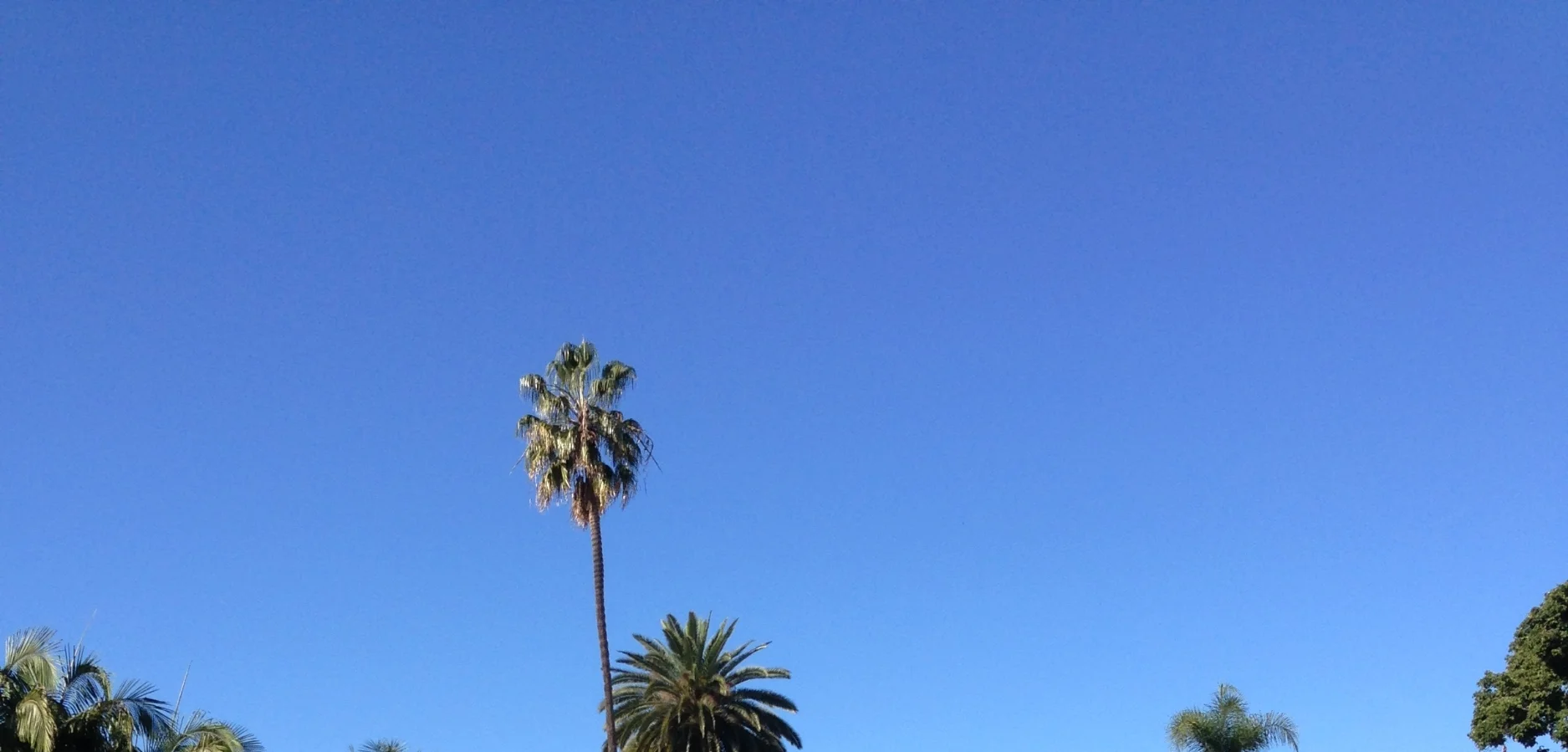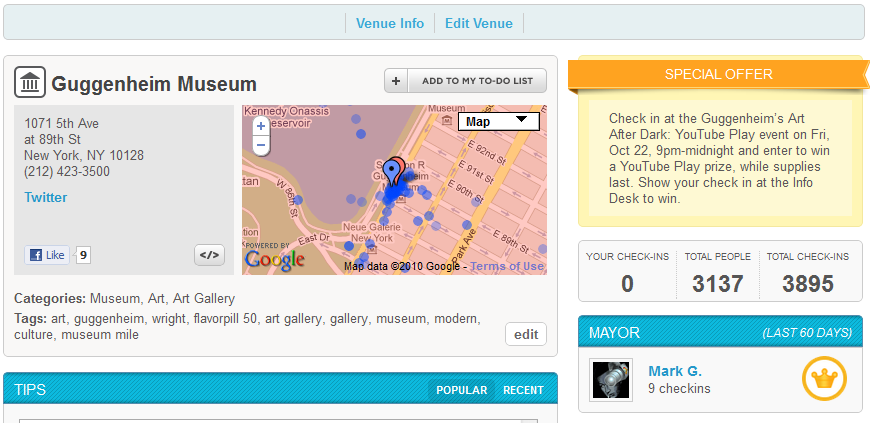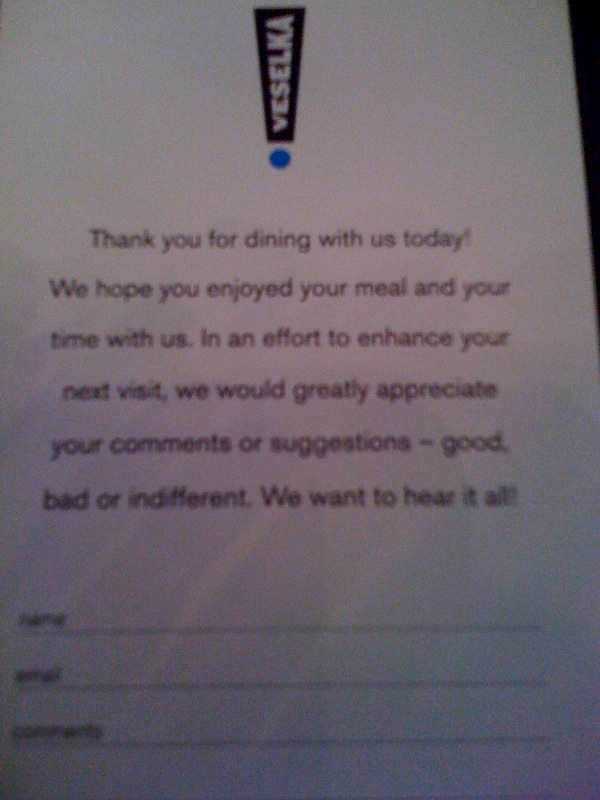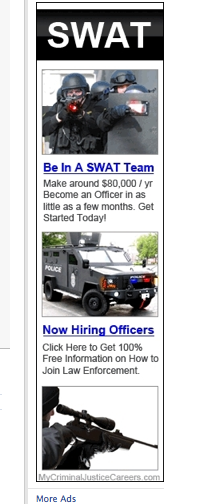I went on a nice little bike ride this weekend. It was memorable, because it was my first with a road bike. You know, the ones with the thin tires, and the potentiaal to cost many thousands? I rented a Felt Z85, and was pretty happy with it. I took my iPhone along for the ride.
I mapped my ride with the MapMyRide iPhone app. After the ride, something crazy happened - I became a marketing opportunity. Hey, I just wanted to map my bike run! A women's antiperspirant had other ideas!
Interesting- why in the lord's name would I tweet their hastag? I'm dripping with sweat! My legs are shaking! I am a man, BTW, and I have never heard of your product!
I tapped "Close" on the ad - and started looing at some of the details. I tapped "Route Details" and up came another ad. Well, at least this one was for men...
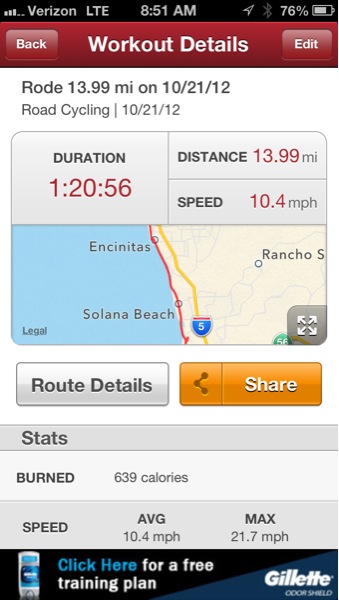

As an athlete, I would never have wanted to see these ads. What could they be offering? However, being in marketing, I am accustomed to trying to find out. As my wife set about cleaning her bike, I lingered on the driveway, still dripping in sweat from an agonizing final climb. I tapped the Gilette ad.
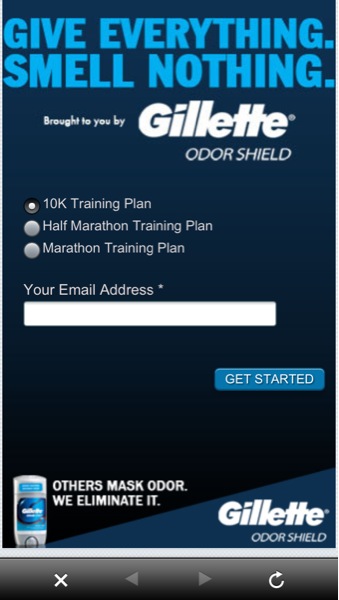
Interesting. I signed up for a half marathon Training program...we'll see how they take it from there. Nice setting of my expectations on when the plan will arrive.
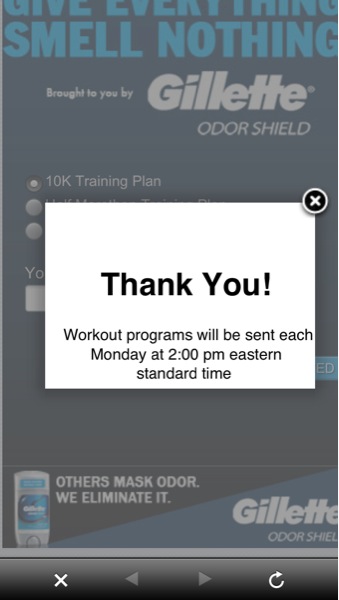
As an athlete, I can't think of anything I wanted less than those ads. The targeting for the first ad was hopelessly off, the second execution mystified me because I had to interact with what looked like an ad in order to egt what I want: content.
The utility and content of MMF is what keeps people engaged - but what happens when all you see is ads? When monetizing the "point of sweat" - content goes further than interruption.
